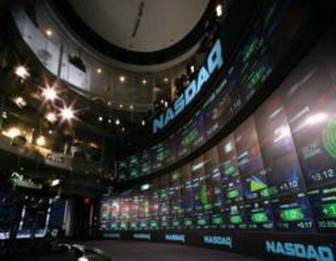 TOKYO (Reuters) – Asian shares edged higher on Monday after global equities ended last week on a subdued note, with investors torn between signs of stable growth in the United States and caution over the global corporate earnings outlook.
TOKYO (Reuters) – Asian shares edged higher on Monday after global equities ended last week on a subdued note, with investors torn between signs of stable growth in the United States and caution over the global corporate earnings outlook.
The MSCI index of Asia-Pacific (KSE: 002790.KS – news) shares outside Japan (EUREX: FMJP.EX – news) added 0.2 percent after shedding 1 percent on Friday and posting its biggest weekly drop in two months.
Australian shares rose 0.4 percent, buoyed by solid U.S. economic growth in the third quarter, while South Korean shares opened 0.6 percent higher.
Japan’s Nikkei (Osaka: ^N225 – news) average was up 0.3 percent after tumbling 1.3 percent on Friday.
The dollar steadied at 79.63 yen, off a four-month high of 80.38 yen touched on Friday, but supported by expectations the Bank of Japan will take further easing measures at its policy meeting on Tuesday.
U.S. GDP grew at a 2 percent annual rate in the third quarter, slightly above a 1.9 percent forecast, and picking up from the second quarter’s 1.3 percent rise. But the stronger pace of expansion fell short of what is needed for a substantial rise in employment.
European shares eked out gains on Friday after the U.S. data but U.S. equities ended largely flat, weighed down by poor earnings outlooks from major companies such as Apple (NasdaqGS: AAPL -news) , Amazon and South Korea’s Samsung.
Over the weekend, China said industrial profits rose 7.8 percent in September from a year earlier to 464.3 billion yuan (46 billion pounds), up from a 6.2 percent drop in August, signalling some stability in the world’s second-largest economy.
“Overall it suggests a continued period of subdued risk reduction bidding the U.S. dollar higher,” said Societe Generale (Paris: FR0000130809 – news) analyst Sebastien Galy.
Data showed that U.S. bond speculators scaled back their bullish bets on U.S. Treasuries futures early last week, even as worries about Spain and disappointing company earnings supported the bond market. Commodity Futures Trading Commission data released on Friday also showed currency speculators cut their bets against the U.S. dollar in the same week to the lowest since early September.
The dollar index measured against a basket of six major currencies hit a near seven-week high of 80.270 on Friday and was hovering near that level at 80.125 early on Monday.
Data from EPFR Global showed that investors pulled the most money out of U.S. stock funds in the past week than at any point in more than a year, an indication that many still harbour deep concerns about the global economy.
“Investors are taking on more risk,” EPFR Global Research Director Cameron Brandt said in a note. “But they are doing so largely within the fixed income universe and, when it comes to equities, bypassing the U.S. in favour of emerging markets.”
Bullish bets on U.S. commodities by hedge funds and other big speculators have fallen to a near 2-1/2-month low, trade data showed on Friday, as oil and gold saw heavy selling for a second straight week.
U.S. crude futures fell 0.4 percent to $85.95 a barrel and Brent eased 0.3 percent to $109.18.
The euro eased 0.1 percent to $1.2922, recovering from a two-week low of $1.28825 hit on Friday. The single currency has been trading in a broad range between $1.28 and $1.31, waiting for bailout prospects for struggling Spain and Greece to become clear.
Some traders said concerns about potential disruptions from Hurricane Sandy approaching the East Coast could keep trading somewhat subdued in Asia.
(Additional reporting by Umesh Desai in Hong Kong)
Source: Reuters



























